What are prayer flags and what do they mean? When and why should you hang them? What we often call ‘Tibetan Prayer Flags’ are actually originally from India. (I thought Tibet too!) These beautifully colored flags feature various prayers and mantras. We’ll explain their meaning and more in this article full of Buddhist Prayer Flag facts!
Buddhist Flags in the Himalayas
In large areas in and around the Himalaya Mountains, prayer flags are a permanent part of the landscape. The flags are important in Tibetan Buddhism and because of their association with this religion, many people think that they originated in Tibet. However, the roots of the prayer flags lie in India. Sutras were already being printed on pieces of brightly colored cloth in India for more than 200 years before they were introduced to Tibet around the year 1040! Today the colorful prayer flags are iconic of the mountainous regions of Tibet (China), Nepal, Bhutan and India.
Types of Tibetan Prayer Flags
There are two types of Tibetan prayer flags, namely the “Lung Ta” and “Darchor” flags. We’ll explain the difference here.
Lung Ta
The most famous prayer flags are the small, colored flags with mantras and symbols printed on them. These are Lung Ta prayer flags. A Lung Ta flag is made of several square or rectangular pieces of cloth hanging on a line. These small, colorful flags make for a festive street scene, like here in Kathmandu, Nepal:
Darchor
A Darchor flag consists of a long stick with a large, rectangular cloth attached to it. They look a bit like beach banners. The fluttering of the Darchor flags is thought to spread wishes for longevity and well-being. That is reflected in the name ‘Darchor’: “Dar” can be translated as “enhancing life, happiness, health and wealth.” “Cho” means “all sentient beings.”
Symbols, Colors and Meanings of the Prayer Flags
It isn’t surprising that the texts and images on prayer flags have important meanings. What many people don’t realize however, is that the colors are also significant. Blue, white, red, green, and yellow each have their own symbolic meaning such as peace, compassion, strength, and wisdom. In addition to this, each color also represents one of the five Dhyani Buddhas, also called the “Five Wisdom Buddhas.”
Windhorse on the Prayer Flags
“Lung ta” means “Wind Horse” in Tibetan. Lung Ta prayer flags often feature an image of the ‘Wind Horse’ in the center and an animal representing one four cardinal directions in each corner: the garuda, dragon, tiger, and snow lion. The Wind Horse is said to fly on the four winds that blow through the flags, spreading peace, prosperity, and harmony as it travels.
Prayer Flag Colors and Their Meaning
A garland of prayer flags consists of five colors. The colors are symbolic for buddhist prayer flags, meaning that they are always hung in the same order: blue, white, red, green, and yellow. These colors represent the five elements. Blue stands for the sky, white for the wind, red for fire, green for water and yellow for earth. Hung in the correct order, the five colors of the prayer flags ensure harmony. Each color also represents one of the qualities of Buddha: self-knowledge, equality, self-control, good action, and living in the moment. It is important to note that each of the five animals is also symbolic of one of these qualities. In this way, the colors and symbols strengthen one another.
Om Mani Padme Hum
“Om Mani Padme Hum” is a well known ancient Buddhist mantra. It literally translates to “Praise to the Jewel in the Lotus.” It is considered to be a mantra of compassion. This mantra, along with about 20 others, is commonly found on prayer flags. Tibetan prayer flags symbols’ meanings are reinforced by the mantras. From the colors to the mantras, prayer flags are complex and deeply meaningful.
How to Hang Buddhist Prayer Flags
Tibetans use the flags to protect against all kinds of negative influences and to encourage prosperity and happiness. But the most beautiful reason that the flags are hung is to wish the whole world peace and harmony!
Good Intentions
It is important that you have the right motivation at heart when hanging the Buddhist flags. If you’re only doing it for yourself, the flags won’t benefit you. You should not have selfish or negative thoughts. You could wish that everything and everyone experiences happiness and prosperity from them! It is also important that you handle the flags with respect. Don’t just throw them somewhere and make sure they don’t touch the ground. Below you can read how to destroy old flags respectfully.
Let Your Prayer Flags Flutter
Prayer flags should never hang still. That is thought to allow negative energy to remain. When deciding where to hang Tibetan Prayer Flags, choose a spot high above the ground, so that they always catch a little wind.
You may be wondering how to hang prayer flags indoors. After all, they make a cheerful and soothing decoration! It’s fine to hang them inside, but preferably near a window or door where they will still catch a draft every now and then. Just remember, when deciding where to hang prayer flags, your intentions for them are most important!
New Year, New Prayer Flags
According to tradition, the best time to hang new prayer flags is in the morning on sunny, windy days. Traditionally, old prayer flags are replaced by new ones every year on the Tibetan New Year. The so-called Losar lasts three days, so keep an eye on the weather forecast and choose the breeziest day to hang the flags outside. Tibetans first hang a new garland next to the old one, as a symbol for the cycle of death and rebirth. Only after the new garland is hung, is the old one removed.
What Do I Do With Old Prayer Flags?
If you put up fresh prayer flags during Losar, what do you do with the old ones? It may sound strange, but is best to burn these. Flags must never touch the ground, not even the old ones, so burning flags allows you to dispose of them without disrespecting them. In the Buddhist tradition, the smoke is said to carry the blessings from the flags to heavens. When burning prayer flags it is important to remember the intentions which the prayer flags represent. Think of all living beings and wish them love, compassion and good things.
You can also let the old garlands hang along side the new flags, so that they decay naturally over time. Of course, this does not work with synthetic flags.
Enthusiastic about Tibetan Flags?
Now that you know how the prayer flag hangs, you can buy your own prayer flags with confidence. To stay in the Tibetan atmosphere a bit, we at Spiru also have beautiful Tibetan Jewelry to wear or give away. I wish you all the happiness and well-being in the world!
Discover our Tibetan Prayer Flags


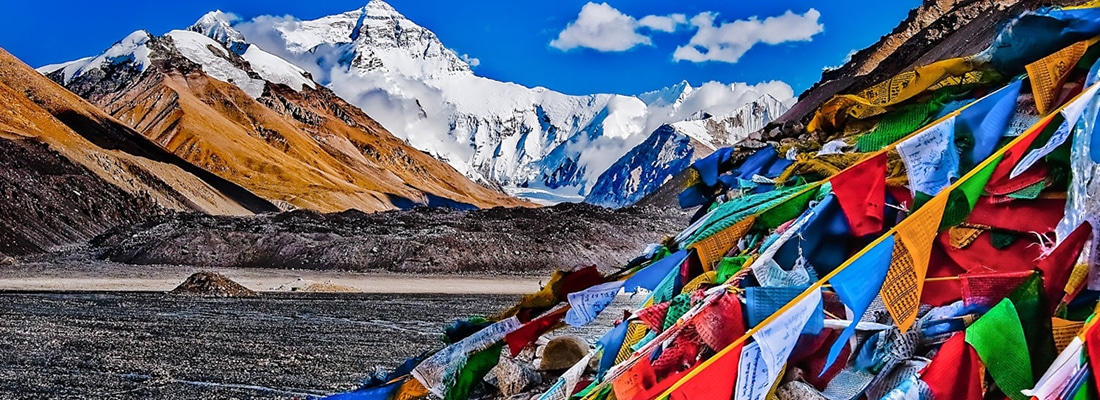
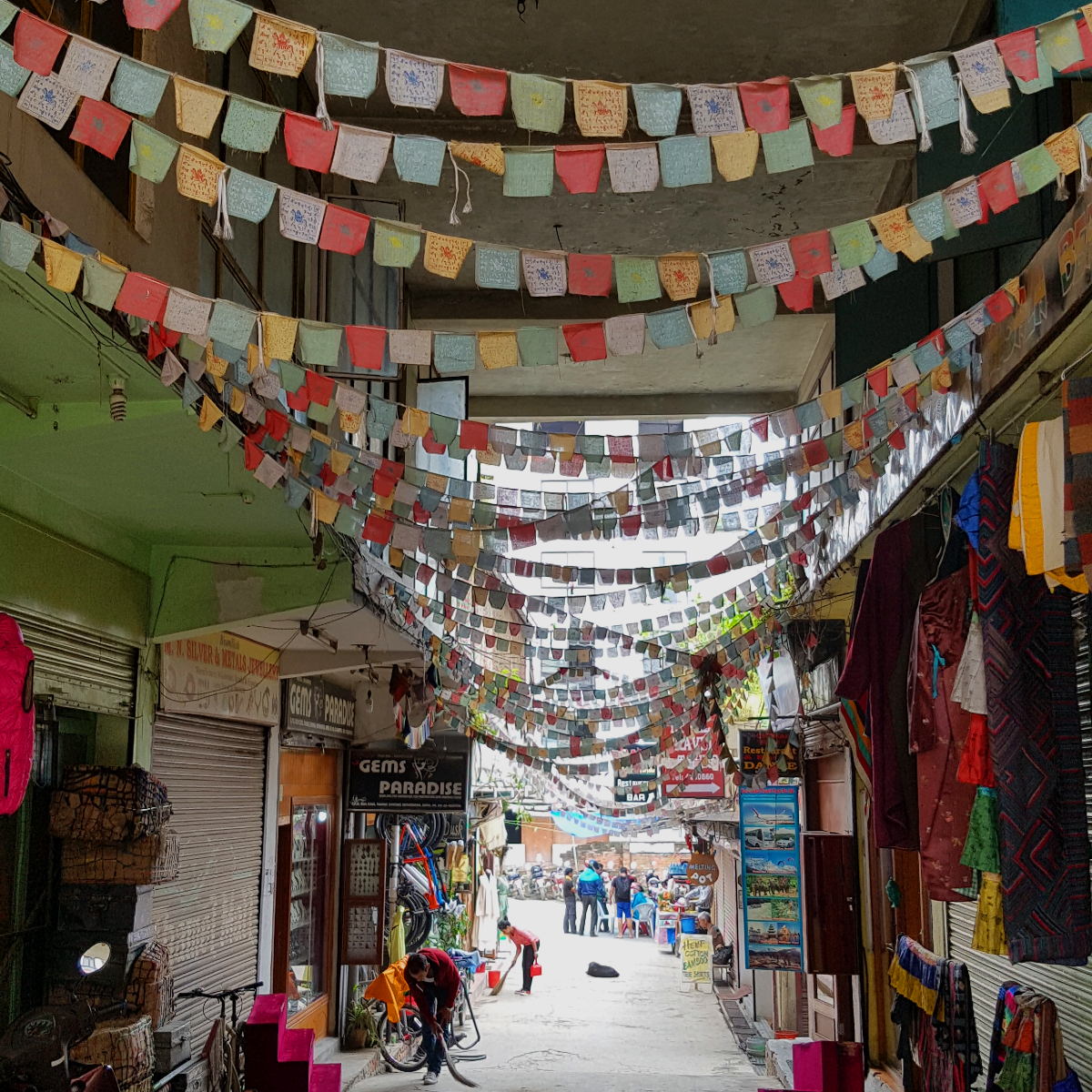
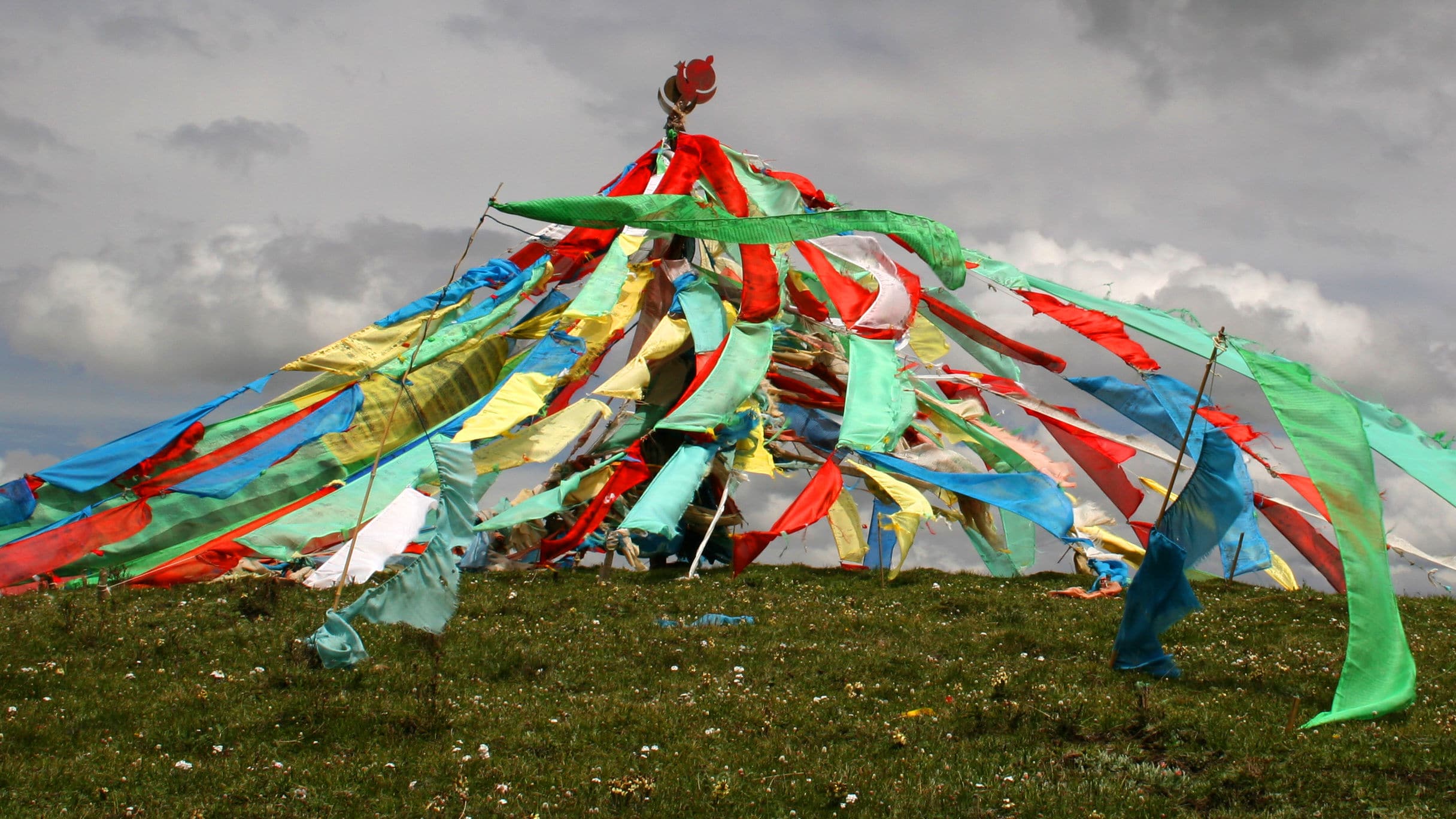
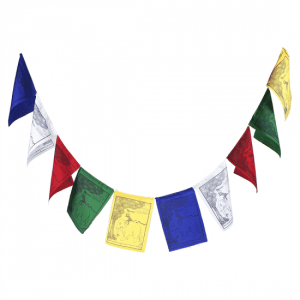
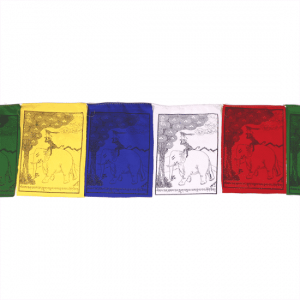
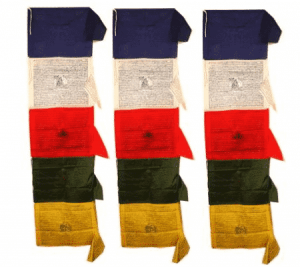
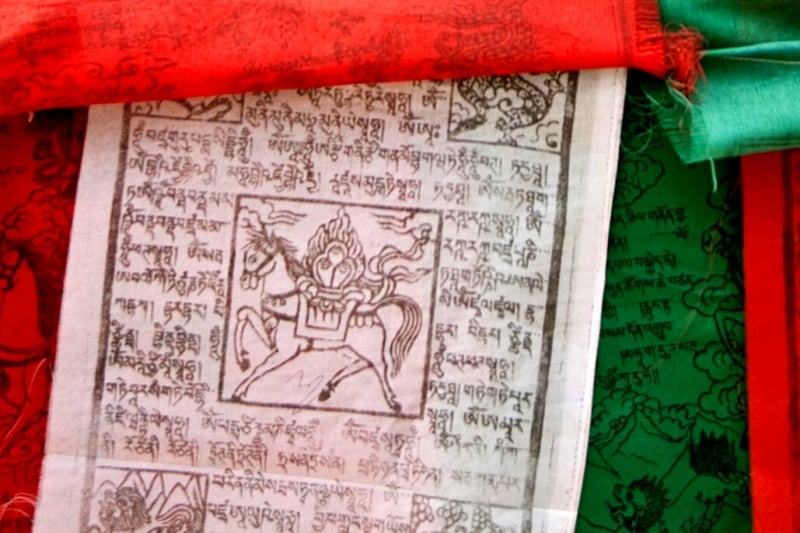
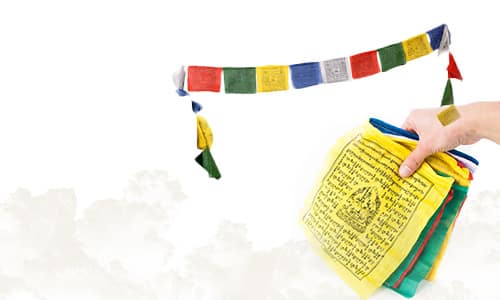
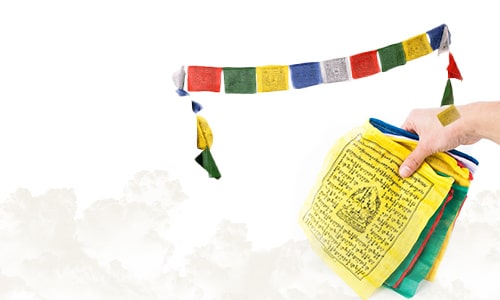
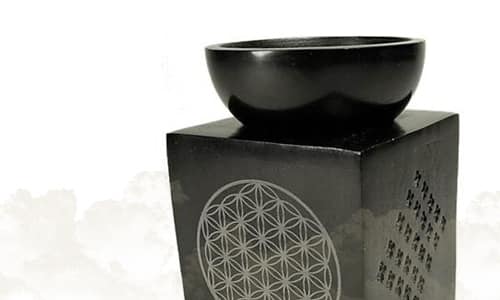
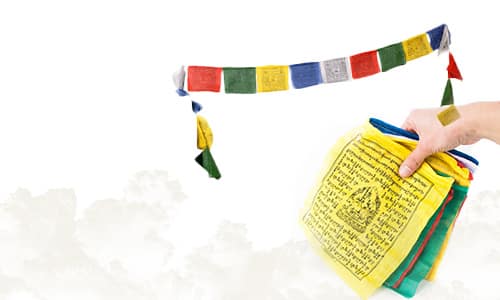
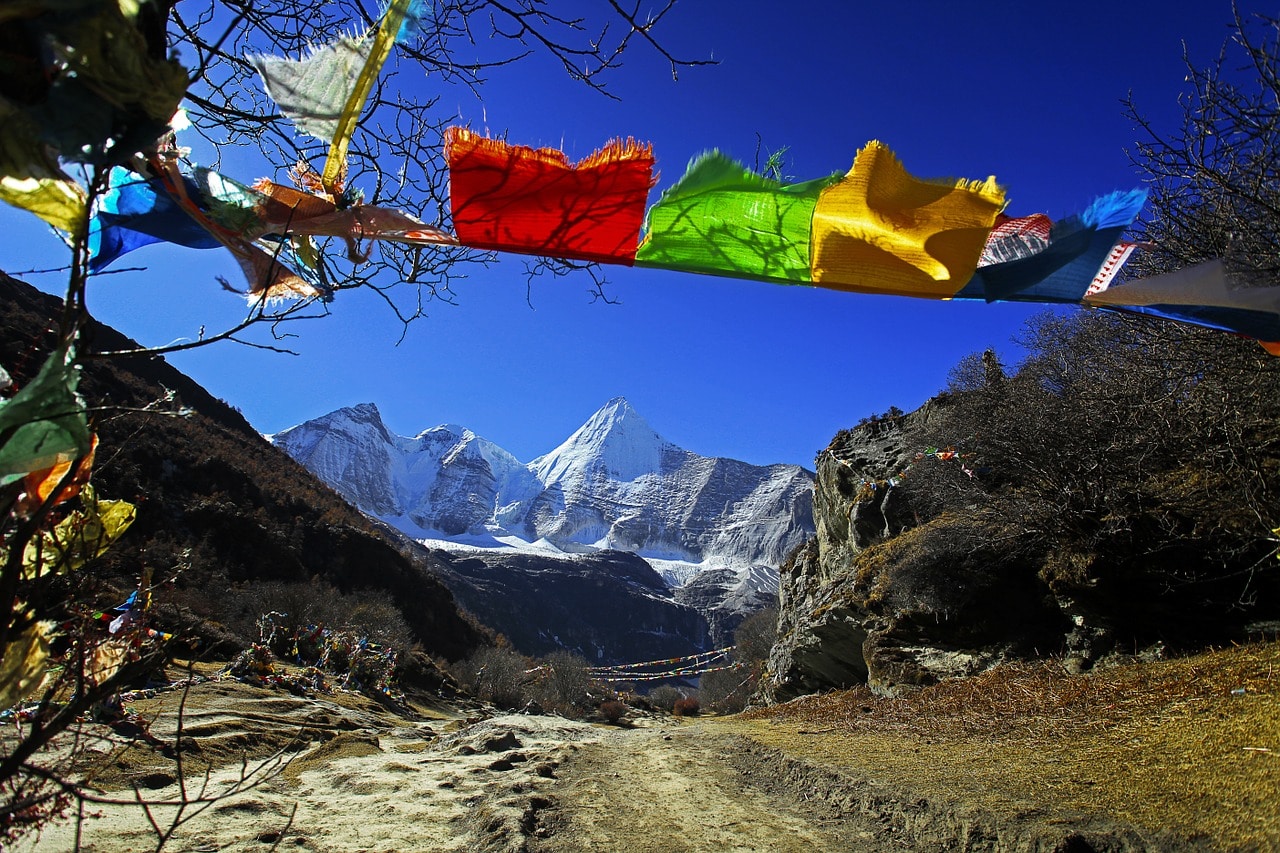
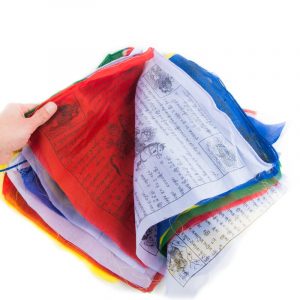
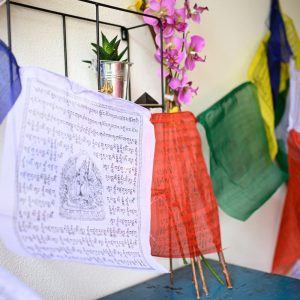
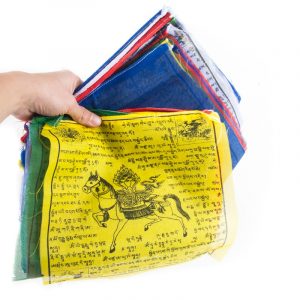
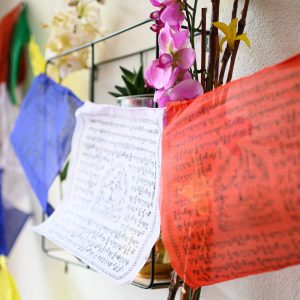
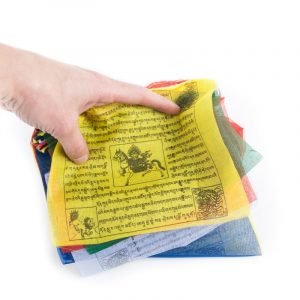
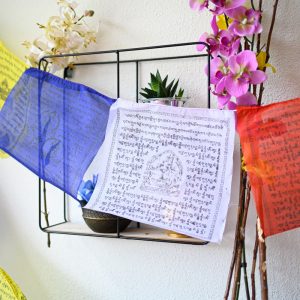

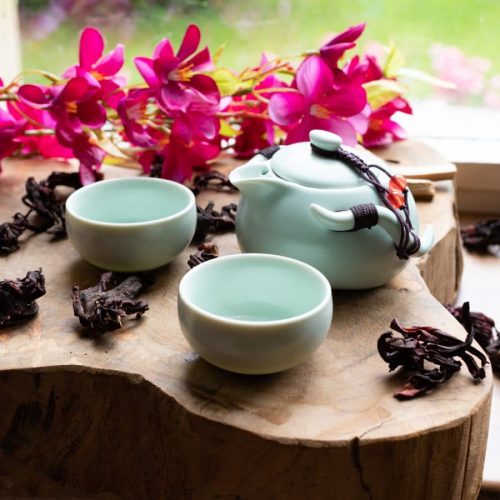


 Nederland
Nederland
 België
België
 Deutschland
Deutschland
 Europe
Europe
 España
España
 Sverige
Sverige
 Français
Français